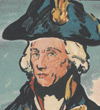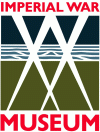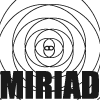
"He Did His Duty – Will You Do Yours?"
The use of historical references in the posters of the First World War
Manchester Metropolitan University & Imperial War Museum 'Posters of Conflict' Project
Introduction
Many of the tensions that led to the outbreak of the First World War were rooted in long-established grievances held between various European nations. Allegiances had been formed and broken time and again, until finally in 1914, the opposing sides of the continent met in an attempt to resolve their differences on the battlefield.
Recalling past grievances, as well as successes, was a fertile means of summoning support and justification amongst civilian populations for the war. History was used as propaganda that could effectively be translated into the visual medium of the poster. Although, the ultimate aim of these historical images was to fuse a contemporary sense of national unity.
Various periods in history, whether real or imagined, were called upon to provide recognisable imagery which portrayed an idealized reflection of each nation. Former moments of triumph and the achievements of past leaders were revitalised to reinspire those caught up in the trauma of the first modern war.
In particular, many posters reflected notions of what constituted the glorious past - a period in time which captured the fighting spirit of the nation. In France, images of the Revolution re-emerged. In Britain, the likes of Wellington and Nelson were resurrected to fight another day. America looked back on the War of Independence, whilst the medieval knights of Central Europe oversaw Germany and Austria-Hungary’s campaign.
For many countries, particularly those submerged within the Austro-Hungarian empire, the war was a struggle for self-determination and the birth of an autonomous national identity. Historical images further reflected the particular need of these nations to look back to a time when they were powerful in their own right.
The historical references used in the following posters therefore served as an important means of maintaining the war effort. They created a unity that enabled those in power to successfully convince the nation’s young men to fight, workers to toil harder, and civilians to stand strong.
Next: Classicism >>


